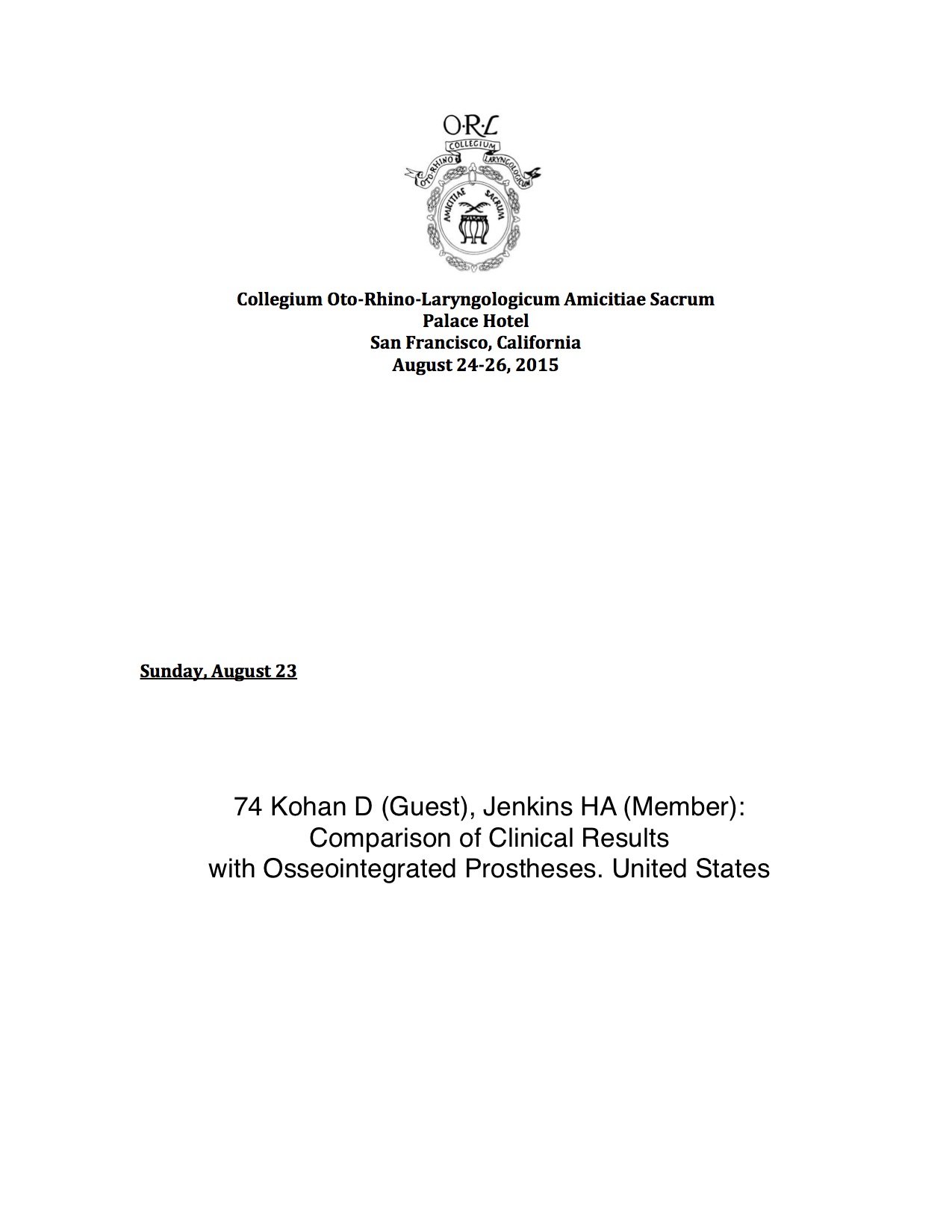About Corlas and Hearing Implants Presentation
The Collegium Oto-Rhino-Laryngologicum Amicitiae Sacrum was established on the 8th of October in 1926 in Groningen, the Netherlands. The founders were Benjamins and de Kleyn, two eminent otologists and scientists, who, after the horrors of the First World War, felt the need for a free exchange of scientific research within Europe. This could only develop within a limited group of scientists who, through their work, had shown their concern for the purely scientific aspects of the subject. The mutual respect that they derived from their work would also serve as an important basis for international understanding and friendship among the members.

With this objective of the founding in mind, the Collegium has developed into the most authoritative international association of otorhinolaryngologists with more than 400 members in 50 countries. Supported by the never-ceasing spirit of its members, the Collegium has survived economic and political crises without losing its original character. Despite the ever-growing number of international congresses and symposia, there still exists a need for a free exchange of ideas within a limited international circle of devoted researchers. The scientific meetings of the Collegium are living proof of this. The Rules, first drawn up in 1927 and modified in 1954, 1961, 1986 and now in 2000, serve only as guidelines. The true spirit of the Collegium cannot be set down in rules and only exists thanks to the members for whom the Amicitiae Sacrum forms an integral part of their scientific aspirations.
Dr. Darius Kohan, Director of Otology/Neurotology at Lenox Hill Hospital, was brought in as an esteemed guest of the Corlas community to present on his comparison of Clinical Results with Osseointegrated Prostheses within the United States.

To determine benefit, limitations, risks, and outcome of the most frequently implanted osseointegrated Implantable Auditory Devices (IAD).
Hearing Implants Study Design
Retrospective randomized study
Methods
26 patients with IAD inserted by senior author were divided into groups based on implants type:
Group 1 – Baha Connect
Group 2a – Baha Attract
Group 2b – Baha 5
Group 3 – Sophono
They all underwent comprehensive audiograms, recorded speech etiology and severity of hearing loss, surgical complications, and auditory outcome with a minimum of 6 months follow up.
Hearing Implants Study Results
All surgeries were performed ambulatory under monitored anesthesia in under 30 minutes without surgical or postoperative complications. Late skin complications occurred at almost 40% only for the Baha Connect population. The average PTA gain was 31db with the Baha Connect, 27db with the Sophono, and 21db with both the Baha Attract and Baha 5. High Frequency gain drops off for all devices, least for Sophono and Baha Connect. With time the magnet strength was decerased for all transcutaneous devices. On the APHAB the ease of communication was equal with the Baha Attract, Baha 5, and Sophono but superior to the Baha Connect.
Conclusions
All devices implanted without surgical complications, however delayed minor recurring skin problems occurred frequently with the Baha Connect. All devices provided substantial benefit with patient satisfaction. The Baha Connect provided the best PTA gain followed by the Sophono-Alpha 2 processor. The Baha Attract and Baha 5 were equivalent. The high frequency gain drops off for all devices, the least decline for the Sophono.





